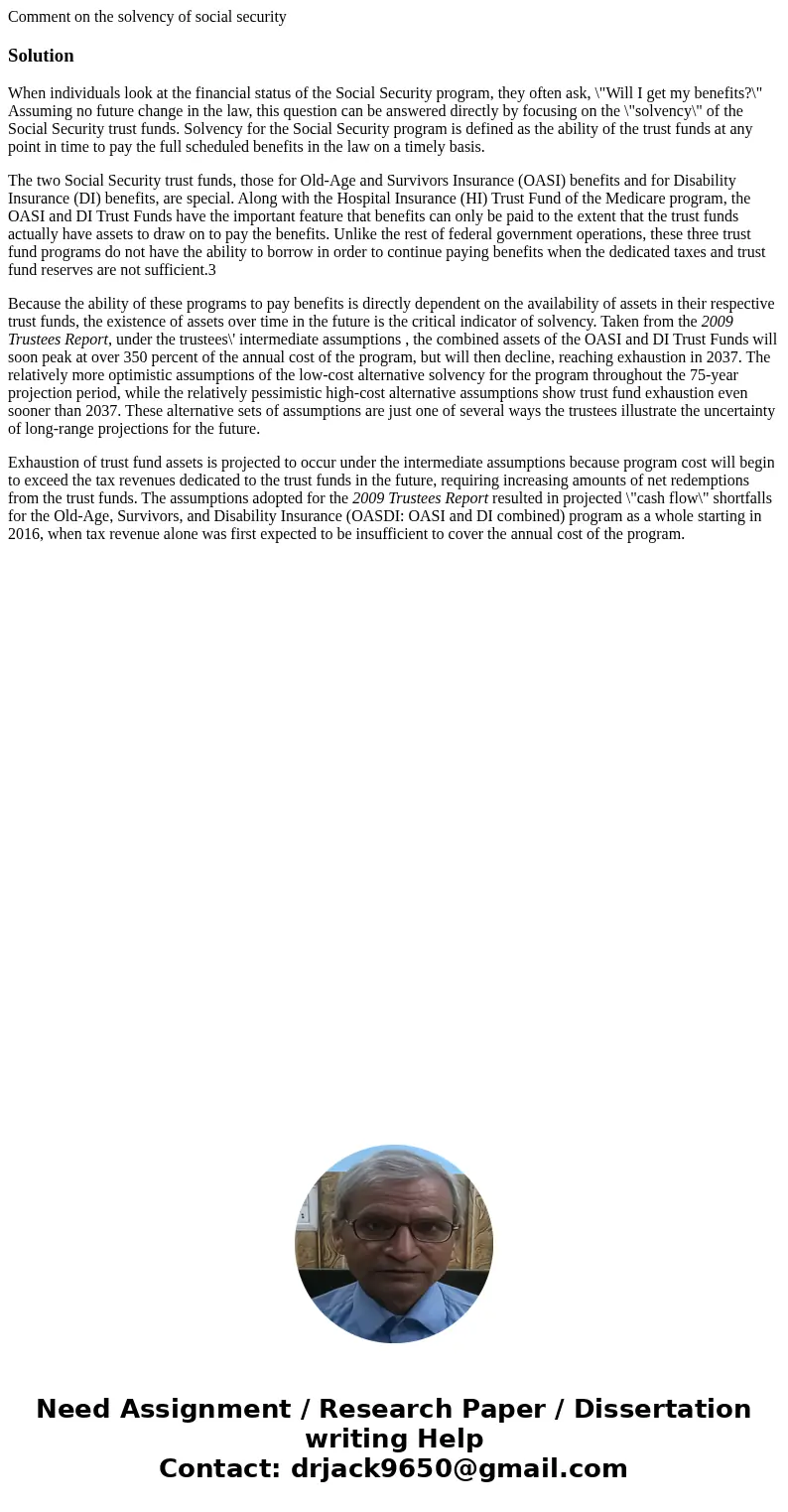Comment on the solvency of social securitySolutionWhen indiv
Comment on the solvency of social security
Solution
When individuals look at the financial status of the Social Security program, they often ask, \"Will I get my benefits?\" Assuming no future change in the law, this question can be answered directly by focusing on the \"solvency\" of the Social Security trust funds. Solvency for the Social Security program is defined as the ability of the trust funds at any point in time to pay the full scheduled benefits in the law on a timely basis.
The two Social Security trust funds, those for Old-Age and Survivors Insurance (OASI) benefits and for Disability Insurance (DI) benefits, are special. Along with the Hospital Insurance (HI) Trust Fund of the Medicare program, the OASI and DI Trust Funds have the important feature that benefits can only be paid to the extent that the trust funds actually have assets to draw on to pay the benefits. Unlike the rest of federal government operations, these three trust fund programs do not have the ability to borrow in order to continue paying benefits when the dedicated taxes and trust fund reserves are not sufficient.3
Because the ability of these programs to pay benefits is directly dependent on the availability of assets in their respective trust funds, the existence of assets over time in the future is the critical indicator of solvency. Taken from the 2009 Trustees Report, under the trustees\' intermediate assumptions , the combined assets of the OASI and DI Trust Funds will soon peak at over 350 percent of the annual cost of the program, but will then decline, reaching exhaustion in 2037. The relatively more optimistic assumptions of the low-cost alternative solvency for the program throughout the 75-year projection period, while the relatively pessimistic high-cost alternative assumptions show trust fund exhaustion even sooner than 2037. These alternative sets of assumptions are just one of several ways the trustees illustrate the uncertainty of long-range projections for the future.
Exhaustion of trust fund assets is projected to occur under the intermediate assumptions because program cost will begin to exceed the tax revenues dedicated to the trust funds in the future, requiring increasing amounts of net redemptions from the trust funds. The assumptions adopted for the 2009 Trustees Report resulted in projected \"cash flow\" shortfalls for the Old-Age, Survivors, and Disability Insurance (OASDI: OASI and DI combined) program as a whole starting in 2016, when tax revenue alone was first expected to be insufficient to cover the annual cost of the program.

 Homework Sourse
Homework Sourse